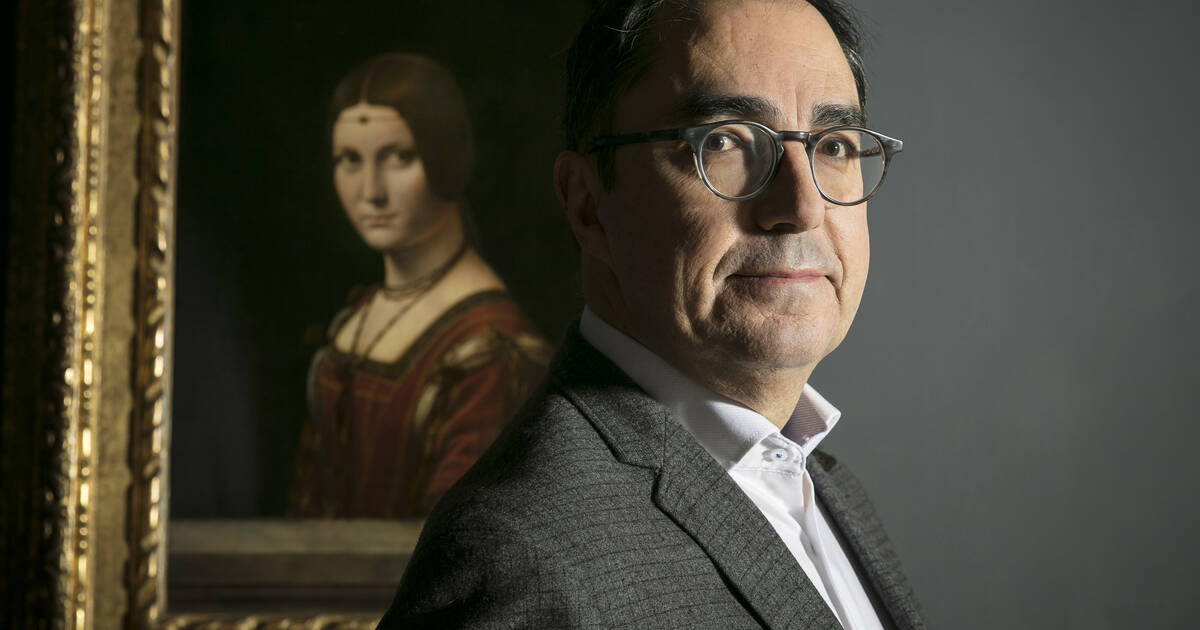Who could have imagined that the ambassador for international cooperation and member of the International Alliance for the Protection of Heritage in Conflict Zones would be suspected of trafficking in antiquities? According to the worldarchaeologist Jean-Luc Martinez, former president of the Louvre, was indicted on Wednesday evening for « money laundering and complicity in organized fraud ». According to an article from chained duck published on Wednesday, the 58-year-old man had been in police custody since Monday with two colleagues, all three heard by the police from the Central Office for the Fight against Trafficking in Cultural Property (OCBC).
If Vincent Rondot, current director of the Egyptian antiquities department of the Louvre, and Olivier Perdu, Egyptologist attached to the chair of Egyptology at the College de France, came out free on Tuesday evening, Jean-Luc Martinez did not come out until Wednesday. in the evening after being indicted for acts of money laundering in an organized gang and complicity in fraud in an organized gang. He is suspected of being linked to an antiquities trafficking that has been going on for years. A scheme involving goods from the Near and Middle East, sold in particular to the Metropolitan Museum of Art in New York and the Louvre Abu Dhabi. Released, Jean-Luc Martinez is nevertheless placed under judicial supervision. According to the chained Duck, investigators suspect him of having « close your eyes » on false certificates.
Fake certificates
At the heart of the investigation led by the examining magistrate Jean-Michel Gentil, a stele of pink granite, monumental, intact, stamped with the royal seal of Tutankhamun, the eleventh pharaoh of the XVIIIth dynasty of ancient Egypt. A stele purchased by the Emiratis and the Louvre Abu Dhabi (United Arab Emirates) in 2016, along with four other works. In 2016, the Louvre Abu Dhabi acquired several Egyptian antiquities, for several tens of millions of euros, according to the chained Duck, including the famous stele. However, in 2018, a preliminary investigation had been opened, since entrusted to investigating judges, aimed at determining whether these antiquities, as well as several dozen others, had been looted, fraudulently removed and then “laundered” thanks to fake certificates.
For the judges, the origin of the stele was tinkered with, tampered with by an expert in antiquity named Christophe Kunicki and by the merchant Roben Dib. Who are these two men? Back in 2017. Since that date, Christophe Kunicki, who then worked for the Bergé & Associés auction house, has been followed by the police. He had attracted attention with the sale of the golden sarcophagus of the priest Nedjemankh, for 3.5 million euros, at the Metropolitan Museum in New York. The centerpiece of an exhibition bearing his name was finally returned to Egypt in 2019. Supporting documents, the French expert nevertheless suggested that the sarcophagus had left the country legally in 1971.
« Conspiracy »
However, the international investigation carried out by American, French, German and Egyptian teams has established that the work had in fact been stolen in 2011 during the uprising against Egyptian President Hosni Mubarak. The forged export licenses were allegedly provided to Kunicki by Roben Dib, merchant and director of the Dionysos gallery in Hamburg. The latter, in his forties with dual German and Lebanese nationality, was extradited to France where he was indicted and imprisoned on March 14. According to the world, the man fueled the auctions of Christophe Kunicki « from a decade ». Since June 2020, the expert in Mediterranean archeology and her husband, Richard Semper, have both been indicted for « organized gang scams », « criminal association », « organized gang money laundering » and « forgery and use of forgery ».
It is precisely Kunicki who proposed the famous stele of Tutankhamun in 2016 to the acquisition commission of the Louvre Abu Dhabi, in addition to four other works purchased via other commissions. 15.2 million euros disbursed later, the stele and the four pieces are acquired. In March, a German dealer, a French collector and gallery owner, and the auction house Pierre Bergé were also indicted. They are suspected of having laundered archaeological objects looted in countries destabilized by the protest movements of the early 2010s, after the surge of the Arab Spring. The announcement of this investigation had disturbed the middle of the art market and antique dealers in Paris, one of the world strongholds of the sector. It remains to be seen for the investigators what role Jean-Luc Martinez may have played in this affair.
.
